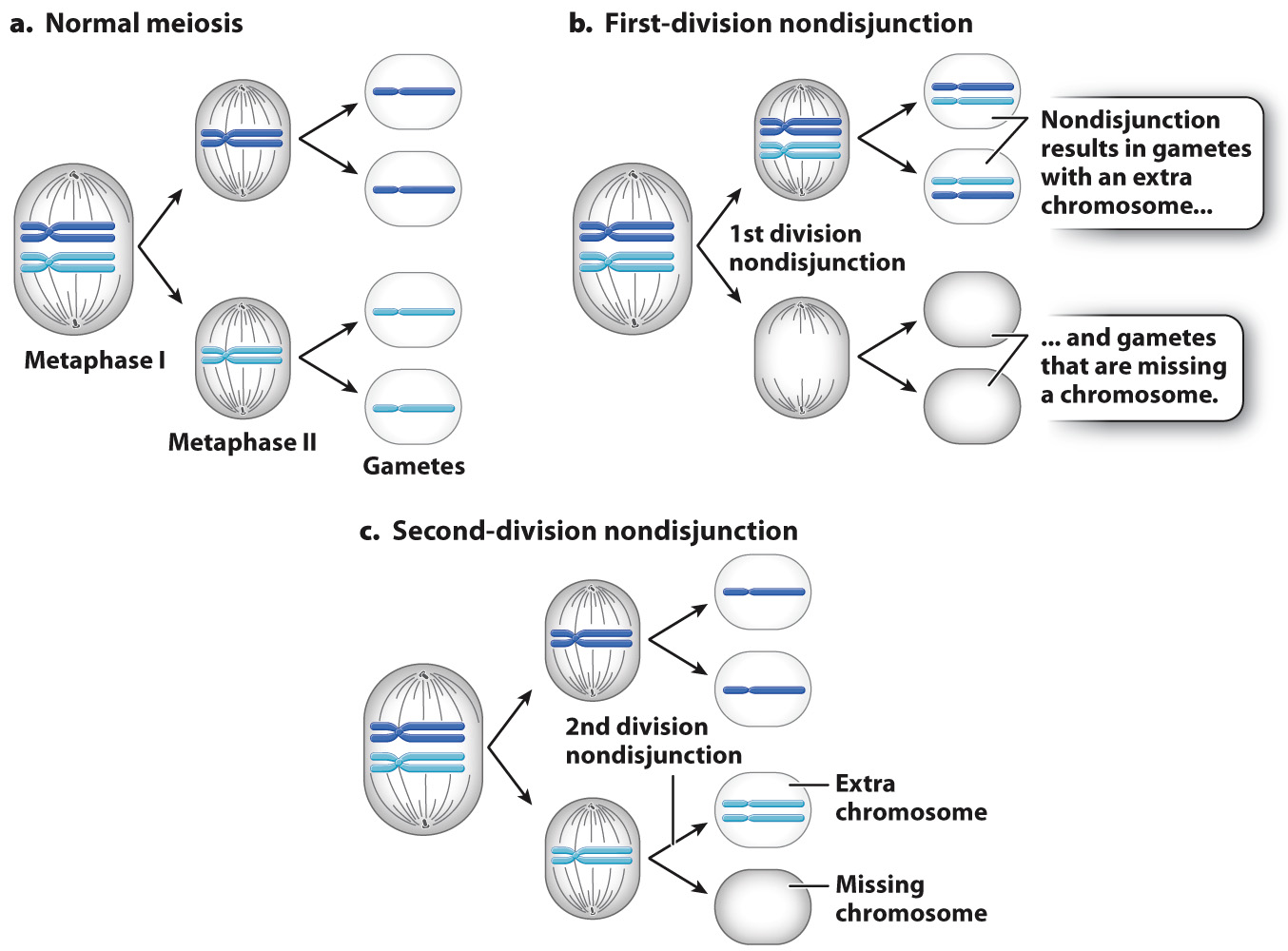Nondisjunction in meiosis results in extra or missing chromosomes.
Nondisjunction is the failure of a pair of chromosomes to separate during anaphase of cell division (Chapter 11). The result is that one daughter cell receives an extra copy of one chromosome, and the other daughter cell receives no copy of that chromosome. Nondisjunction can take place in mitosis, and it leads to cell lineages with extra or missing chromosomes—
When nondisjunction takes place in meiosis, the result is reproductive cells (gametes) that have either an extra or a missing chromosome. Fig. 15.10 illustrates nondisjunction in meiosis. Fig. 15.10a shows key stages in a normal meiosis, in which chromosome separation (disjunction) takes place in both meiotic divisions, with the result that each gamete receives one and only one copy of each chromosome.

Failure of chromosome separation can occur in either of the two meiotic divisions. Both types of nondisjunction result in gametes with an extra chromosome or a missing chromosome, but there is an important difference. In first-